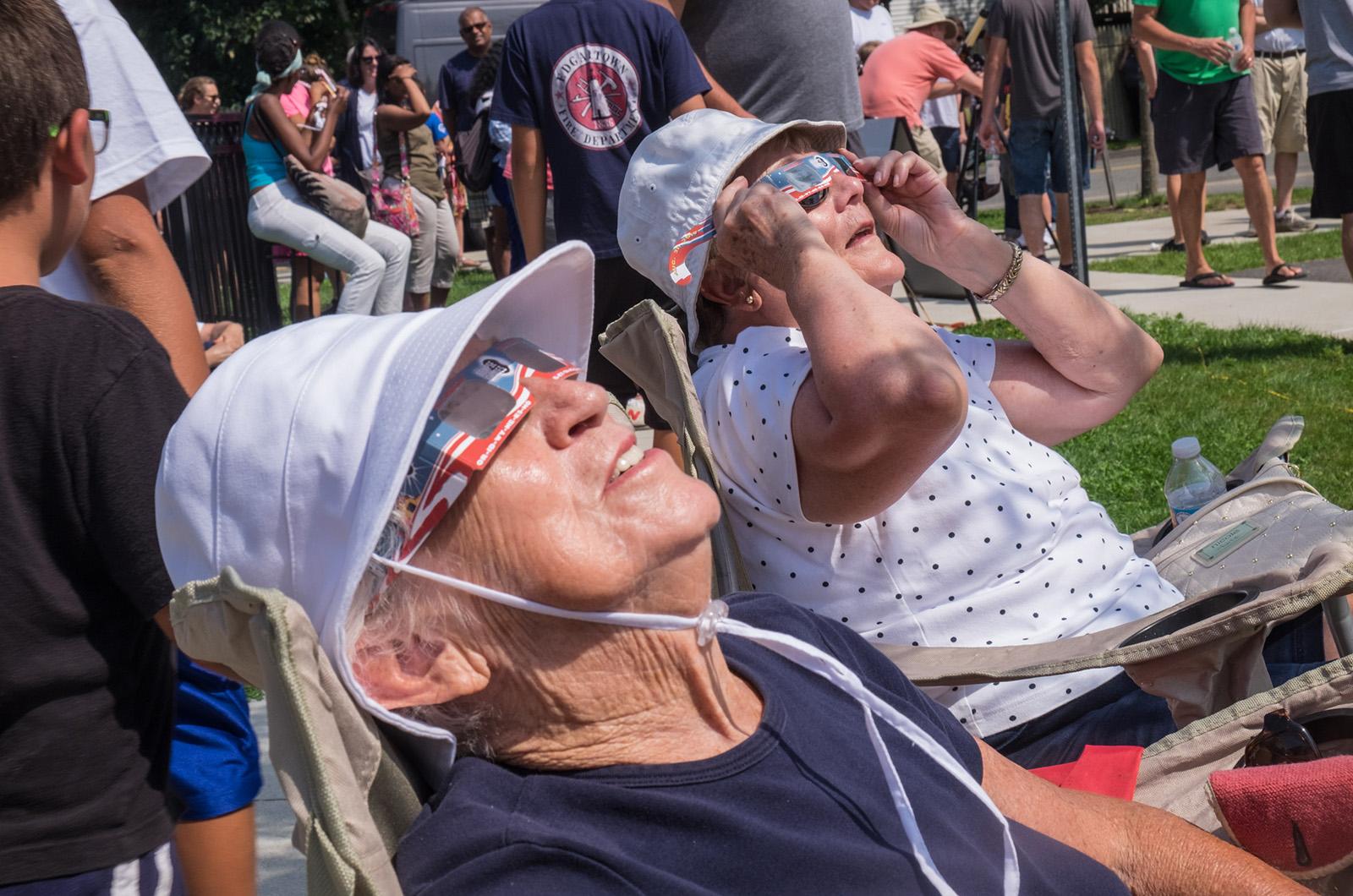I am still occasionally haunted by the remembrance of Steven Spielberg’s 1982 movie Poltergeist. For those who don’t recall or know the film, it tells the tale of a house haunted by spirits that kidnap the family’s youngest daughter, Carol Anne. She famously detects their presence, noting “They’re here” before they take her into their realm. Carol Anne must get back to the world of the living and not the eternity of death, signified by a very bright light.
Carol Anne’s mother pleads with her: “Listen to me. Do not go into the light. Stop where you are. Turn away from it. Don’t even look at it.”
Next week, we should all follow that advice. In the movie, the light kills — and with the coming of the solar eclipse on April 8, light may not cause death, but will cause damage if you give in to the desire to watch the show.
To be fair, one should never look directly into the sun, though during an eclipse, folks are tempted and many do gaze skyward. After the last solar eclipse in 2017, visits to ophthalmologists increased, as did the diagnosis of solar retinopathy.
Solar retinopathy is a condition that describes eye damage caused by looking directly at the sun. Its symptoms can include loss of vision, color distortion, black spots and other visual irregularities. Even a few seconds gazing intently at the sun can cause these burns to the retina.
And the bad news is that once the retina is injured, it cannot be repaired. Retinal cells don’t have pain receptors, so you won’t feel the damage. These cells, at the back of the eyes, die from the burns and cannot regrow. Children are especially susceptible, so watch the little ones.
There are a few safe ways to view the sun and the eclipse. If you are using binoculars, cameras or telescopes to observe the eclipse (or the sun at any time), make sure that you have special solar filters that will protect your eyes.
To observe and enjoy the eclipse, go with indirect observation methods. Regular sunglasses do not offer adequate protection, though special eclipse glasses can serve to allow viewing. Be sure that you have glasses that comply with the ISO 12312-2 international standard as these oculars are much darker than regular glasses and provide the safety required.
Another option is to create a pinhole projector. Many versions are found online, though the concept is simple: you make a pinhole in a piece of paper, cardboard or something similar, and position that pinhole sheet a distance from a second surface with the pinhole paper closer to the sun. This will project an image of the sun through the pinhole onto that second surface, and you can view the eclipse damage-free in real time. The best part is that your eyes never view the sun directly.
You will also be able to feel a connection with history, as painters in the Renaissance were well acquainted with this trick. They called this set-up a “camera obscura” (dark chamber), and used it to create accurate images of a subject sitting before it. The inventors of modern film cameras merely adapted the pinhole principle to shine the light on photographic plates.
No matter how you observe the coming solar eclipse, do it safely! One could even choose to watch the phenomenon from the safety of a TV screen or stream it online. After all, it is not to be missed as the next one won’t be observable until 2044. That’s a good enough reason not to be in the dark about this coming cosmic confluence.
Suzan Bellincampi is director of the Felix Neck Wildlife Sanctuary in Edgartown, and author of Martha’s Vineyard: A Field Guide to Island Nature and The Nature of Martha’s Vineyard.




Comments
Comment policy »